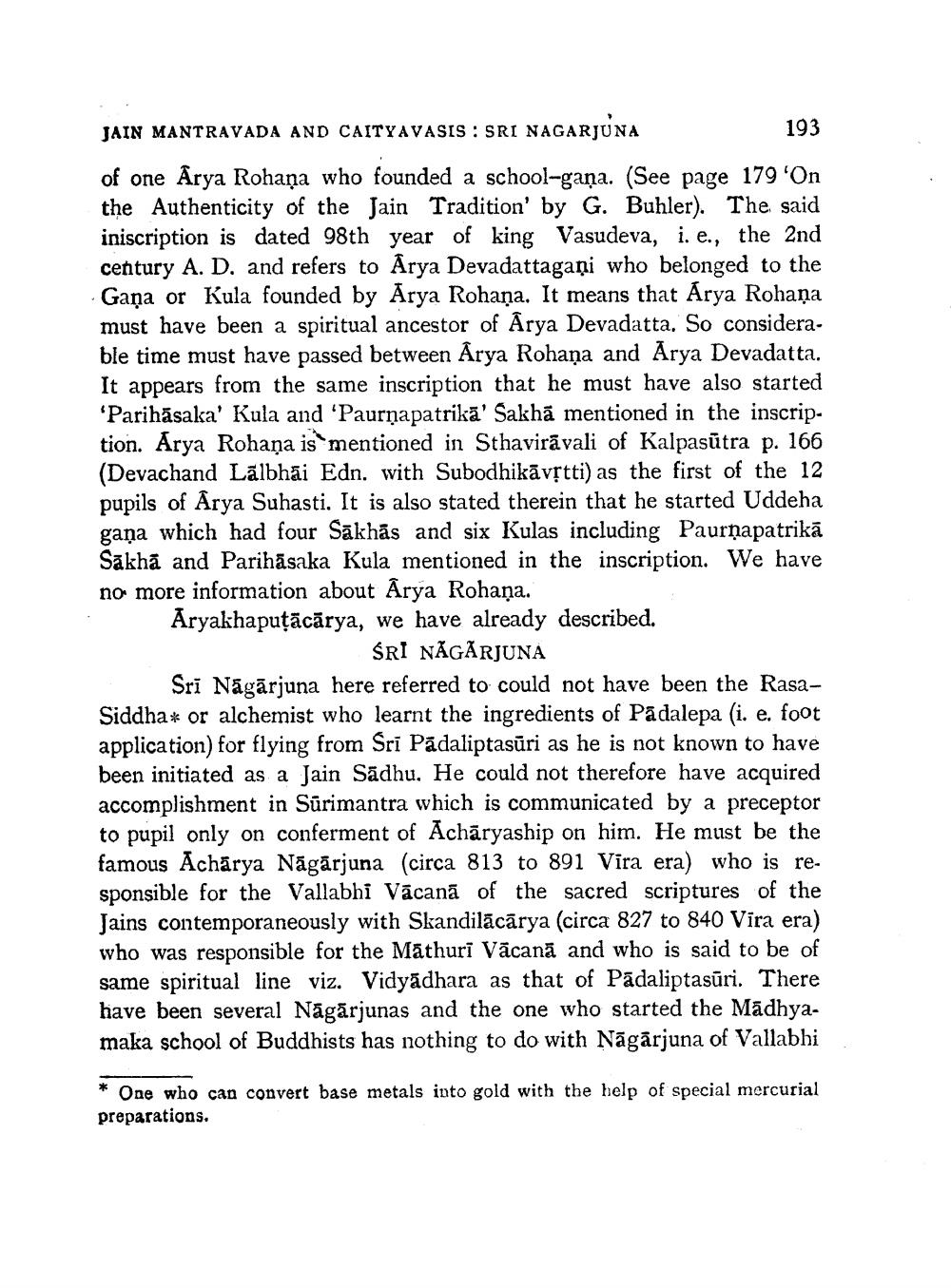________________
JAIN MANTRAVADA AND CAITYAVASIS: SRI NAGARJUNA
193
of one Arya Rohana who founded a school-gaña. (See page 179 'On the Authenticity of the Jain Tradition' by G. Buhler). The said iniscription is dated 98th year of king Vasudeva, i. e., the 2nd century A. D. and refers to Arya Devadattagaņi who belonged to Gaņa or Kula founded by Arya Rohaņa. It means that Arya Rohaņa must have been a spiritual ancestor of Arya Devadatta. So considerable time must have passed between Arya Rohana and Arya Devadatta. It appears from the same inscription that he must have also started 'Parihāsaka' Kula and 'Paurņapatrikā' Sakhā mentioned in the inscription. Arya Rohana is mentioned in Sthaviravali of Kalpasūtra p. 166 (Devachand Lalbhāi Edn. with Subodhikāvstti) as the first of the 12 pupils of Arya Suhasti. It is also stated therein that he started Uddeha gana which had four Sākhâs and six Kulas including Paurņapatrikā Sakhã and Parihāsaka Kula mentioned in the inscription. We have no more information about Arya Rohaņa. Aryakhapuțācārya, we have already described.
SRI NĂGĂRJUNA Srī Nāgārjuna here referred to could not have been the RasaSiddha* or alchemist who learnt the ingredients of Padalepa (i. e. foot application) for flying from Sri Padaliptasūri as he is not known to have been initiated as a Jain Sādhu. He could not therefore have acquired accomplishment in Sūrimantra which is communicated by a preceptor to pupil only on conferment of Achāryaship on him. He must be the famous Acharya Nāgārjuna (circa 813 to 891 Vira era) who is responsible for the Vallabhi Vācanā of the sacred scriptures of the Jains contemporaneously with Skandilācārya (circa 827 to 840 Vira era) who was responsible for the Mathuri Vācanā and who is said to be of same spiritual line viz. Vidyadhara as that of Padaliptasūri. There have been several Nāgārjunas and the one who started the Madhyamaka school of Buddhists has nothing to do with Nāgārjuna of Vallabhi
* One who can convert base metals into gold with the help of special mercurial preparations.




